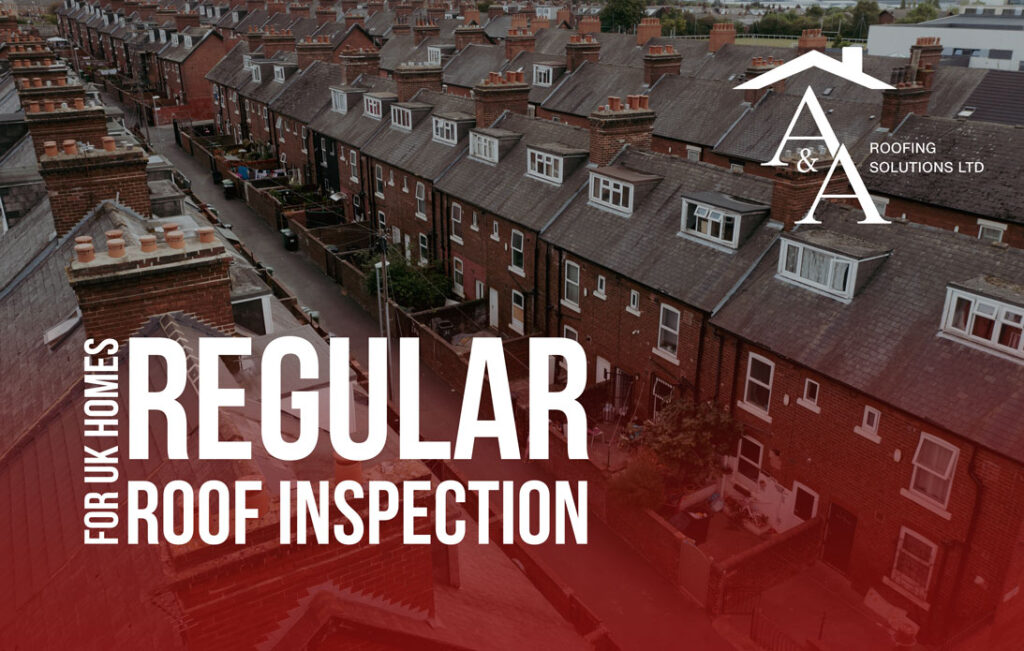- Serving London and surrounding areas
- Work for us

Your roof is one of the most critical parts of your property — it protects your home, belongings, and family from the unpredictable UK weather. Yet, it’s often the most overlooked. Many homeowners don’t think about their roof until a leak appears or damage becomes obvious. By then, repairs can be costly and disruptive.
That’s why scheduling a regular roof inspection is one of the smartest investments you can make as a homeowner. From catching small problems early to extending your roof’s lifespan, the benefits are significant. In this article, we’ll explore why roof inspections are essential for UK homes, how often they should be carried out, and what you can expect during the process.
The biggest advantage of a roof inspection is early detection. Issues like:
Cracked or missing tiles
Damaged flashing around chimneys or skylights
Blocked gutters and downpipes
Early signs of leaks or water pooling
… may seem minor but can quickly escalate if ignored. For example, a single cracked slate might let water seep underneath, leading to damp patches, rot, and even structural damage in the long run.
A professional inspection identifies these issues before they spiral out of control, saving homeowners thousands of pounds in repairs.
The UK’s climate puts unique pressure on roofs. Heavy rainfall, strong winds, snow, and even sudden heatwaves all impact roofing materials. Slate, tile, and asphalt all respond differently to weather, but none are immune to wear and tear.
Winter: Freeze-thaw cycles can cause cracks to widen.
Autumn: Falling leaves clog gutters, causing water build-up.
Spring & Summer: UV rays gradually weaken roofing materials.
A roof inspection ensures your roof is weather-ready year-round. It’s particularly important after storms or harsh winters when hidden damage may have occurred.
Roof replacement is one of the most expensive projects a homeowner can face. However, with regular inspections and maintenance, you can extend the life of your roof significantly.
For example, slate roofs — common on many UK homes — can last 80–100 years, but only if they are properly cared for. Without routine checks, even the most durable materials can fail prematurely.
If issues are found, a roof restoration may be recommended. This can involve replacing damaged tiles, re-sealing joints, or upgrading insulation to ensure your roof continues to perform at its best. Learn more about restoration services here.
Think of inspections as preventive healthcare for your home. The cost of a routine roof inspection is minimal compared to the expense of major repairs.
Consider this:
Fixing a few loose tiles might cost a few hundred pounds.
Replacing damaged roof timbers from long-term leaks can run into thousands.
A complete roof replacement may cost £5,000–£15,000 depending on the size of the property.
By investing in inspections, you catch problems early and avoid these large, unexpected expenses.
A roof does more than keep out rain; it plays a big role in your home’s insulation and energy efficiency. Gaps in the roof or poorly maintained insulation can allow heat to escape during the winter and make your home uncomfortably hot in the summer.
A well-maintained roof:
Reduces heat loss
Keeps energy bills lower
Makes your home more eco-friendly
During an inspection, roofers also check for ventilation issues that may lead to mould growth, ensuring your home is both efficient and healthy.
If you plan to sell your home, the condition of the roof is one of the first things potential buyers will consider. A home with a damaged or visibly ageing roof can put buyers off immediately — or result in them negotiating a much lower price.
On the other hand, a home with a roof that has been regularly inspected and maintained demonstrates care and reliability. It not only protects your property’s value but can even increase it.
Owning a home comes with enough worries. Knowing your roof has been inspected and is in good condition provides priceless peace of mind. You can face storms, heavy rainfall, or snowfall without constantly worrying about leaks or damage.
For landlords and property managers, inspections also reduce the risk of tenant complaints, emergency repairs, and liability issues.
Most experts recommend having a roof inspection at least once a year. However, additional inspections are advisable after:
Severe storms or heavy snowfall
Moving into a new property
Completing major home renovations
Noticing visible changes, such as sagging, moss growth, or dampness indoors
Regular inspections keep your roof in top condition and help plan for maintenance before issues escalate.
A professional inspection typically includes:
Checking for missing, loose, or cracked tiles/slates
Examining flashing around chimneys, vents, and skylights
Inspecting gutters and drainage
Looking for signs of leaks or water damage in the loft
Assessing the condition of roof insulation and ventilation
Some roofers may also use drones or advanced technology for a more detailed overview.
Your roof silently protects your home every single day, but without care, even the strongest roof can fail. Regular roof inspections are not a luxury — they are a necessity for every UK homeowner. From extending roof lifespan to saving money and improving energy efficiency, the benefits are clear.
If you suspect your roof is due for attention, don’t wait until damage occurs. Arrange a professional inspection today and secure your peace of mind.
👉 Learn more about professional roof restoration services here or book an appointment with our experts via our contact page.
Monday to Sunday: 6:00 AM – 8:00 PM (Open Daily)
Subscribe to our newsletter for the latest updates and offers.
© [2010 [A&A Roofing]. All Rights Reserved. Designed By Spectrum Media Solutions.